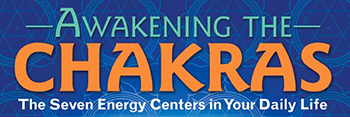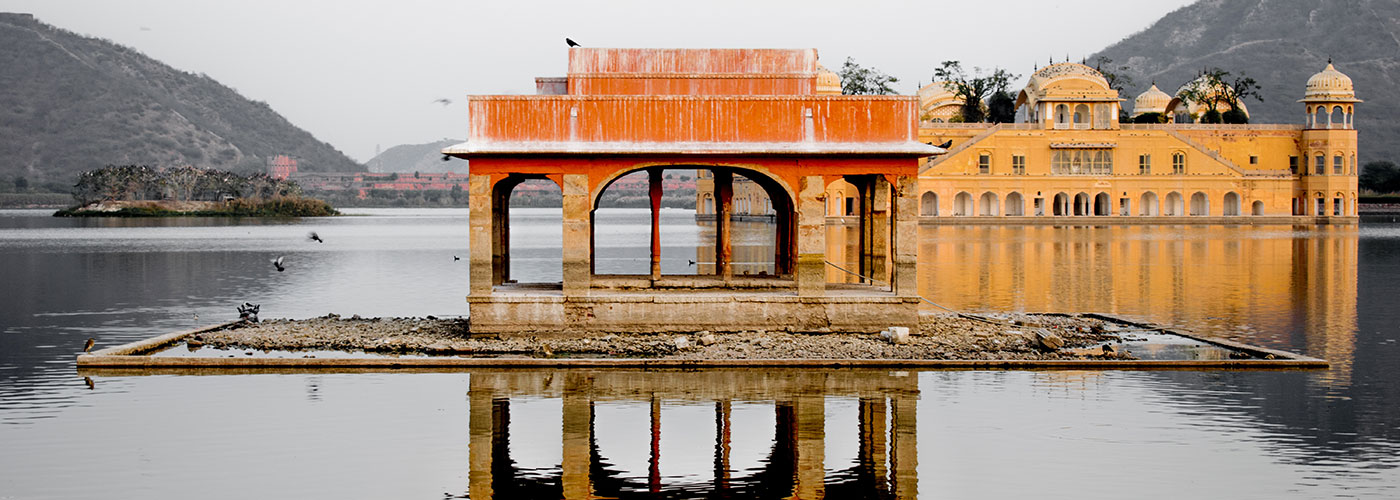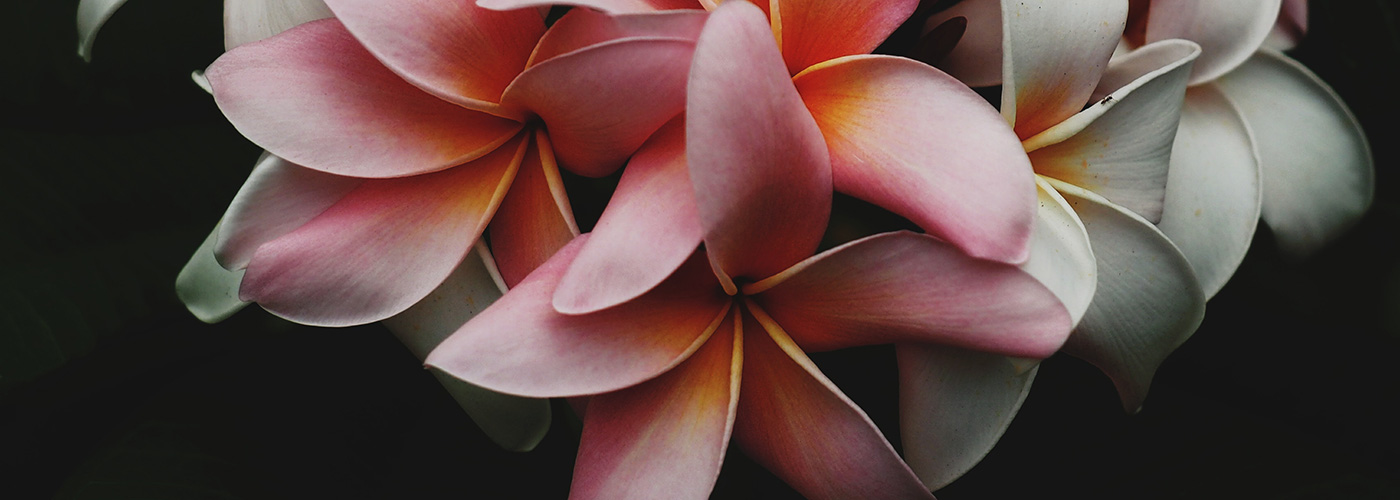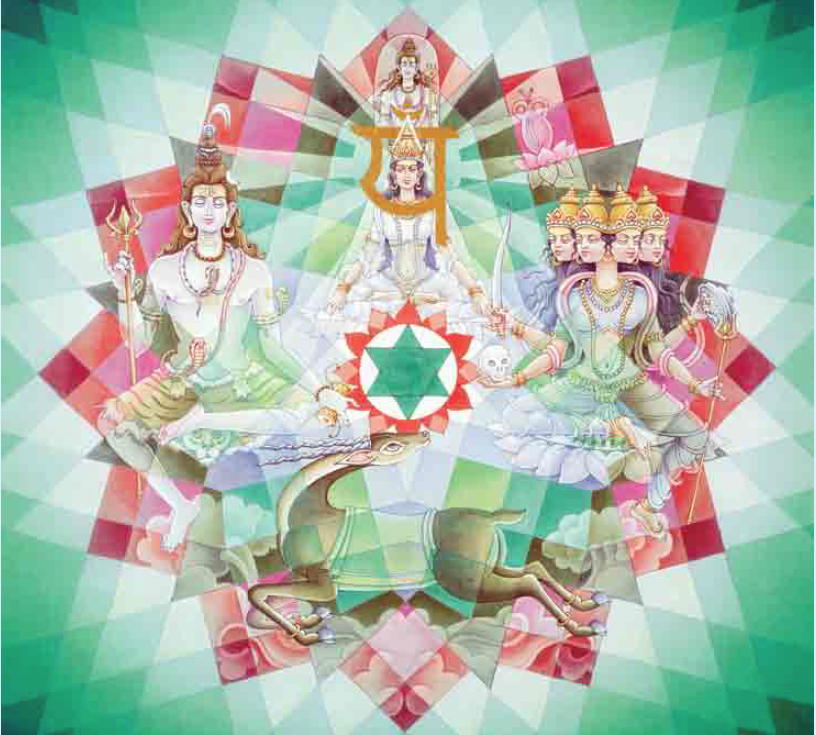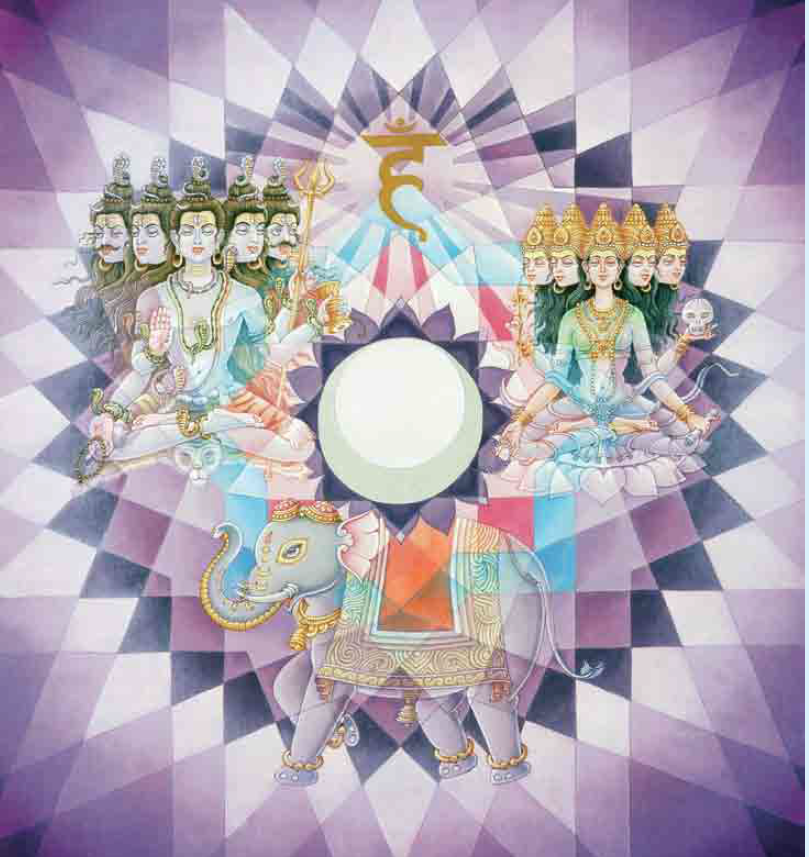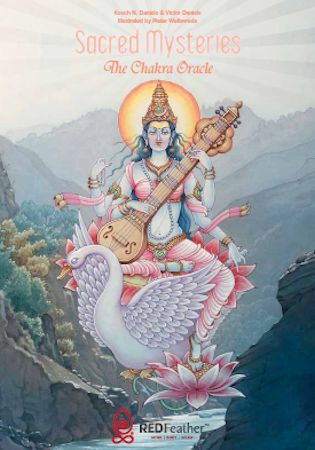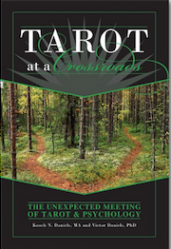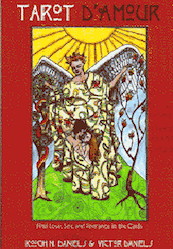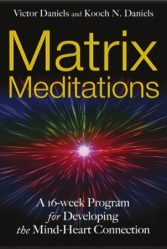“WHEN YOU TALK ABOUT CHAKRAS, YOU TALK ABOUT EVERYTHING!” ~ SRI HARISH JOHARI
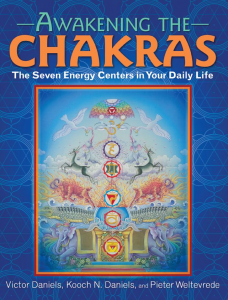
AWAKENING THE CHAKRAS:
THE SEVEN ENERGY CENTERS IN YOUR DAILY LIFE
by Victor Daniels, Kooch N. Daniels, and Pieter Weltevrede
CHAKRAS reflect seven kinds of energy in the body, mind, emotions, and spirit. Rooted far back in Hindu tradition, they are presently emerging in Western culture as a useful guide to deeper understanding of the inner self for followers of any religious, philosophical, or psychological tradition. Viewed as seven spinning wheels of energy, they are arranged in a column up along the spinal cord, from its base to the top of the head.
WORKING WITH THE CHAKRAS IN DAILY LIFE CAN:
INCREASE YOUR EFFECTIVENESS
BRING OUT YOUR HIDDEN POTENTIALS
HELP YOU SEE MORE DEEPLY INTO WHAT OTHERS SAY AND FEEL
and even BRIGHTEN YOUR AWARENESS
 The first or Muladhara chakra, often called the root chakra, relates to physical and emotional security and survival.
The first or Muladhara chakra, often called the root chakra, relates to physical and emotional security and survival.
 The second or Svadhisthana chakra, often called the passion chakra, addresses sexuality, relationships, creativity, fame and fortune.
The second or Svadhisthana chakra, often called the passion chakra, addresses sexuality, relationships, creativity, fame and fortune.
 The third or Manipura chakra, also called the power chakra, is about strength, power, confidence, or the lack of any of those.
The third or Manipura chakra, also called the power chakra, is about strength, power, confidence, or the lack of any of those.
 The fourth or Anahata chakra, the heart chakra, is the vortex of compassion, unselfish love, acceptance, forgiveness and service.
The fourth or Anahata chakra, the heart chakra, is the vortex of compassion, unselfish love, acceptance, forgiveness and service.
 The fifth or Vishuddha chakra, the throat chakra, is about communication, truth, knowledge and the use of intellect.
The fifth or Vishuddha chakra, the throat chakra, is about communication, truth, knowledge and the use of intellect.
 The sixth or Ajna chakra, the third eye, is about intuition, inner and outer insight, and advanced stages of spiritual practice
The sixth or Ajna chakra, the third eye, is about intuition, inner and outer insight, and advanced stages of spiritual practice
 The seventh Sahasrara chakra, or crown chakra, the thousand petaled lotus, refers to beauty and the highest stages of spiritual consciousness.
The seventh Sahasrara chakra, or crown chakra, the thousand petaled lotus, refers to beauty and the highest stages of spiritual consciousness.
BODILY LINKS ARE:
First chakra = anus. Second chakra = genitals. Third chakra = stomach. Fourth chakra = heart. Fifth chakra = throat. Sixth chakra = forehead. Seventh chakra = crown of the head.
CHAKRAS IN ASIAN TRADITIONS
In India’s yogic traditions that trace their origins back to the Vedas, the principal yogas are these: Hatha Yoga emphasizes the body and mind-body connections. Raja Yoga emphasizes meditation. Bhakti Yoga emphasizes love, devotional practice, and ecstatic states. Karma Yoga emphasizes transcending your self-centered ego and offering service and respectful help to others;. Jnana Yoga emphasizes gaining true knowledge and wisdom. And Tantra Yoga emphasizes that realization of divine mother energy is as necessary as the widespread emphasis on divine father energy. Tantra views all acts as flowing from the universal creative spirit. Chakra work is a central feature of Tantric practice. In the West ,Tantra is widely thought of as a sexual yoga, but this is a limited understanding. Indeed, in contrast to the “Left-handed” sexual Tantric path, “Right-handed” Tantra emphasizes developing self-control through practice of austerities. Stepping outside the yogic tradition, we also find Buddhist esoteric traditions that include chakra systems. None, howeverr, make chakras as central to their teachings as Tibetan Buddhism. In the Tibetan chakra tradition, a central goal is to align the organic harmony of personal consciousness with compassionate loving-kindness toward all beings.
CONNECTIONS WITH WESTERN PSYCHOLOGY
Twentieth Century psychologist Abraham Maslow developed a model called the “hierarchy of needs.” He spoke of “deficiency or deficit needs” (D-needs) that are roughly equivalent to the three lower chakras. His “being needs” (B-needs) are more like the four higher chakras. Gestalt therapy emphasizes direct awareness in the moment. Such awareness has much in common with the mindfulness and witness consciousness developed by Yogic and Buddhist meditation. Knowing the chakras can help either a gestalt therapist or any other kind of psychotherapist or counselor pinpoint a given person’s strengths and hindrances. Founder of psychoanalysis Sigmund Freud’s “libido” has much in common with the Tantric construct of Kundalini energy. Kundalini is portrayed as a coiled snake asleep at the base of the spine. As the energies of each chakra are awakened the snake moves upward along the spine until cosmic consciousness is realized. The human potential movement with such leading figures as Alfred Adler, Carl Rogers, Rollo May, and Maslow criticized most psychotherapy as far too limited,. A “well adjusted” person who could function in society was that old goal. Existential, humanistic, and transpersonal psychologies aimed at going beyond “being OK” to develop our greater and grander potentials and to lead as joyful and fulfilling a life as possible. This resembles the states that can be attained through development of fourth through seventh chakra energies. Western psychology emphasizes counseling and psychotherapy for personal transformation, while Yoga and Buddhist traditions emphasize meditation and spiritual practices as paths to the same end.



A path that can help you benefit fully from understanding chakras can be summed up in six insights:
SIX KEY INSIGHTS
1. Every chakra has both a bright side that consists of its gifts and strengths, and a dark side that consists of its issues and challenges.
1. Each chakra is not just one monolithic thing.” It has a dozen or so subdimensions, Effective chakra work requires identifying which of them is troubling or attracting you. Then you can learn how to work with the problem or develop the capacity in question.
3. Effective chakra work usually requires both direct awareness of a quality the present moment, reflection on past events that led to your present way of being with that quality, and some sense of what you’d like to do with all that. (“Past, present, and future”.)
4. Chakra work involves your physical body, emotions, thoughts, connections with others, and your relationship to “something greater than yourself.” Whether you call that God, the Divine Mother, the Universe, or anything else is up to you.
5. The tools of chakra work include breath work, movement, concentrative focus, mindfulness, polarity-balancing meditation, affirming and developing both your everyday strengths and your inner spirit, sound and mantra work, and action in your world. Which to use depends on your needs and preferences and on the situation. And on the specific chakra and the dimension of it you’re working with at a given time.
6. The ethics of chakra work include truthfulness, being as honest with yourself as you can, working to let go of ego attachments to being “right” or feeling “better than” others, and radical respect for other people and other living beings.



Awakening the Chakras identifies about twelve specific aspects of each chakra. These are not “opposites” but polarities along a continuum. Each is presented as a continuum that goes from “obstacles” at one end to “opportunities” at the other end. For example, the first chakra includes:
OPPORTUNITIES OBSTACLES
Feeling secure Insecure and needy
Feeling grounded Being distracted and flighty
Feeling worthy Having low self-esteem
Feeling courageous & strong Feeling timid
Self-determination dependence on outside directions
Responsible Blaming and unreliable
As you think about those specific subdimensions, you can see the challenge with just thinking about “opening the first chakra” — or any other chakra. Some beginning instruction books and websites talk about “opening” and “balancing” the chakras. But to work most effectively with them you have to ask, “which specific aspects of the chakra?” And then ask how to cope more effectively with a dimension’s “obstacle.” Or how you can fine- tune what you’re doing at the “opportunity” end of the continuum.
For example, you can be self-determining in a healthy manner, or you can compulsively think “I must do everything myself” and have a hard time accepting valuable guidance. There are ways to increase or decrease the amount of energy that you’re giving to a specific dimension of a given chakra. And there are ways to use the energies more effectively. That’s one of the meanings of “balancing.”
Most often it’s just as important to balance the varied energies within a chakra as it is to balance the energies that are flowing to and from different chakras. There’s always value in learning the most important messages of the chakras as you interact with their energy in the moment.



WHAT’S SPECIAL IN AWAKENING THE CHAKRAS?
A unique Table of Possibilities introduces each chakra. Twelve subdimensions of each chakra are discussed. These point to the opportunities that can come from fully realizing the chakra’s potential, and the obstacles that the chakra’s energies may encounter .For each of the seven chakras, the following points are discussed:
- The Chakra’s Essence
- The Mental Pathway for working with the chakra’s energies
- The Body and Emotions Pathway: Feeling tones in the chakra. This section identifies both personal and relational transformations that can occur.
- The Pathway of Spirit. This includes a detailed description of the symbolism of each chakra. Beautiful illustrations provide a visual embodiment of the chakra’s messages.
- Practical Tools for working with the chakra. For each chakra there is a method for developing greater relaxation, concentration, polarity-balancing meditation, sound healing, and a guide to taking action
QUESTIONS AND ANSWERS
Q. What is kundalini?
A. We all have a vital force inside us. Tantra yoga calls it kundalini, Sigmund Freud called it libido. Others call it still by other names. Through inner work, we can strive to develop it in constructive ways and learn to use the energies of all the chakras. But most people don’t. Most people live out their lives mainly at the level of the first three chakras, which are all heavily ego centered (that is, “me first, and too bad if that’s not so great for you.”) For someone with that mind-set, talk and thoughts about the higher chakras tends to be mostly mind-games. There are, however are systematic ways of working with the chakra energies that allow you to move your kundalini upward through them and master the energies of one after another.
Q. Are there other chakras besides the seven that most people talk about?
A. Yes, highly advanced yogis identify two more that are sometimes called ‘subchakras.” You don’t need to be concerned about them until you’re working at their sixth chakra level. At that point, you’ll be ready to learn more about them. And it’s possible to move on to the seventh chakra without concerning yourself with the two subchakras.
Q. How can I work with chakras?
A. One approach is though the body-oriented path of chakra yoga.
Or, the meditation & mindfulness path of developing greater awareness of each chakra, and how your thoughts, feelings, and actions in each connect with the others.
Or the wisdom path of coming to know yourself deeply enough to easily understand where and how you need to work within each chakra.
You can do some of this completely by yourself. For some practices it’s helpful to have a guide.
Q. Can crystals, and colors, and scents, and oils help balance your chakra energies? Some books and websites say they can. Is it true?
A. Sometimes they help. They can set a tone and create an atmosphere that facilitates chakra work. But they’re not magic. They won’t do the work for You have to do it for yourself.
Q. Can a guru or yoga teacher or some other kind of guide be helpful?
A. If they’re truly capable and not dogmatically committed to just one approach, yes. And if you have a really tough time trying to let go of a counterproductive old habit or trying to channel your energies in a new direction you might even consult a psychotherapist or healer.
Q. I’m a psychotherapist but I’ve never made chakra knowledge part of my practice. Do you think I’d find it valuable with my clients?
A. Probably. Detailed knowedgde of the chakras is likely to make explicit some things that you probably already know intuitively, and make some of your work more effective. See the “Professionals” page on this website.
Q. I’m a Tarot reader, and I’ve tried to bring chakra knowledge into my readings. How can do I do so more effectively?
A. Thanks for asking, The new chakra deck and book Sacred Mysteries: The Chakra Oracle, by Kooch and Victor, with 49 cards beautifully illustrated by Pieter Weltevrede, is exactly what you’re looking for.
Q. Is it really possible to achieve full self-realization or cosmic consciousness through chakra work?
A. It’s misleading to talk about balancing the energies of your higher chakras and achieving cosmic-consciousness if you haven’t done the work of moving your awareness through the challenges of lower ones. The first stage of chakra work is to clean up what you’re doing in the first three chakras. That also helps handle everyday problems in living and relationship challenges. The biggest obstacle in moving toward higher consciousness lies in getting to the fourth chakra where you release much of your ego-centered “me first” energy in order to feel compassion and selflessly help others. Then it’s becomes easier to open, develop, and balance your fifth and sixth chakra energies. It’s up to your Higher Self or “God” or “Goddess” as to whether and when you can open the thousand petal lotus of your crown chakra and become enlightened.

You might also enjoy these other offerings . . .
NEW RELEASE! Sacred Mysteries: The Chakra Oracle. A card deck illustrated by world-class artist Pieter Weltevrede. and also see. . .
Sacred Mysteries: The Chakra Oracle: The book by Kooch & Victor Daniels written to accompany the Chakra Oracle deck.
Tarot at a Crossroads: The Unexpected Meeting of Tarot and Psychology. Psychological understandings for tarot readers, and original methods of using the tarot and other visual imagery in psychotherapy and counseling.
Tarot D’Amour: Find Love, Sex and Romance in the Cards. How to use the tarot to understand and improve relationships — your own or those of your clients. Much of this is relevant to family and workplace relationships as well as to lovers and partners.
Matrix Meditations: A 16-Week Program for Developing the Mind-Heart Connection. We should have said “16 months” or “16 years.” Includes a detailed description of how meditation works and step-by-step instructions for mindfulness, concentration, and contemplative meditations. The structure resembles the I. Ching, with 65 “cells” that each contain an insightful commentary and one meditative practice.
Click on images above to view websites
